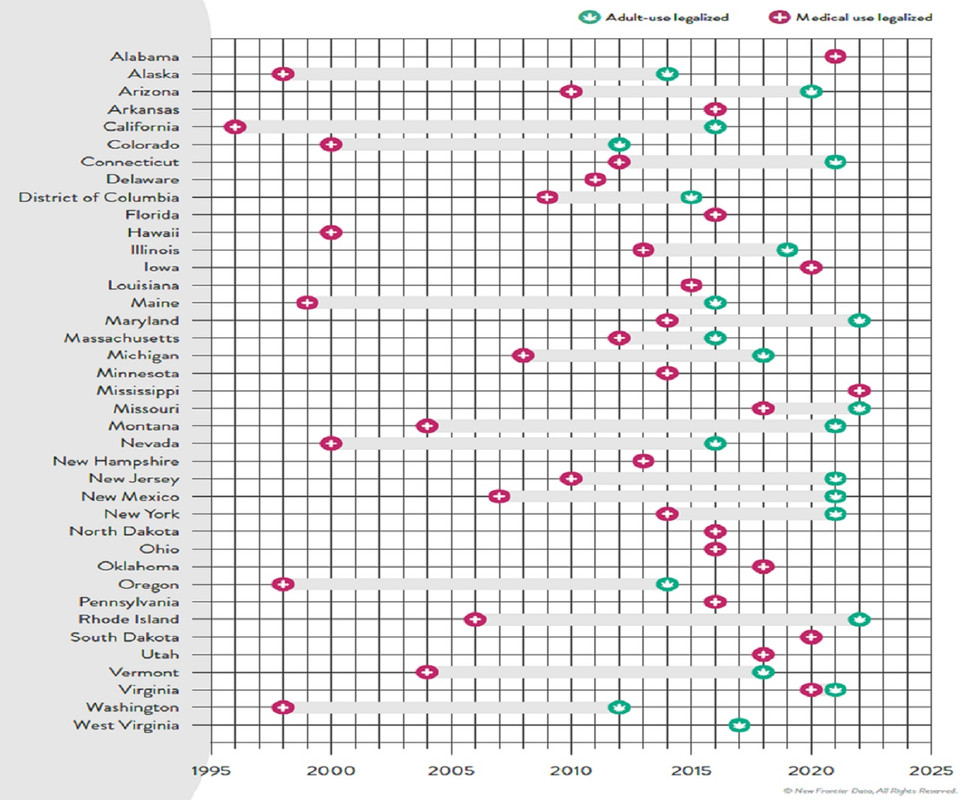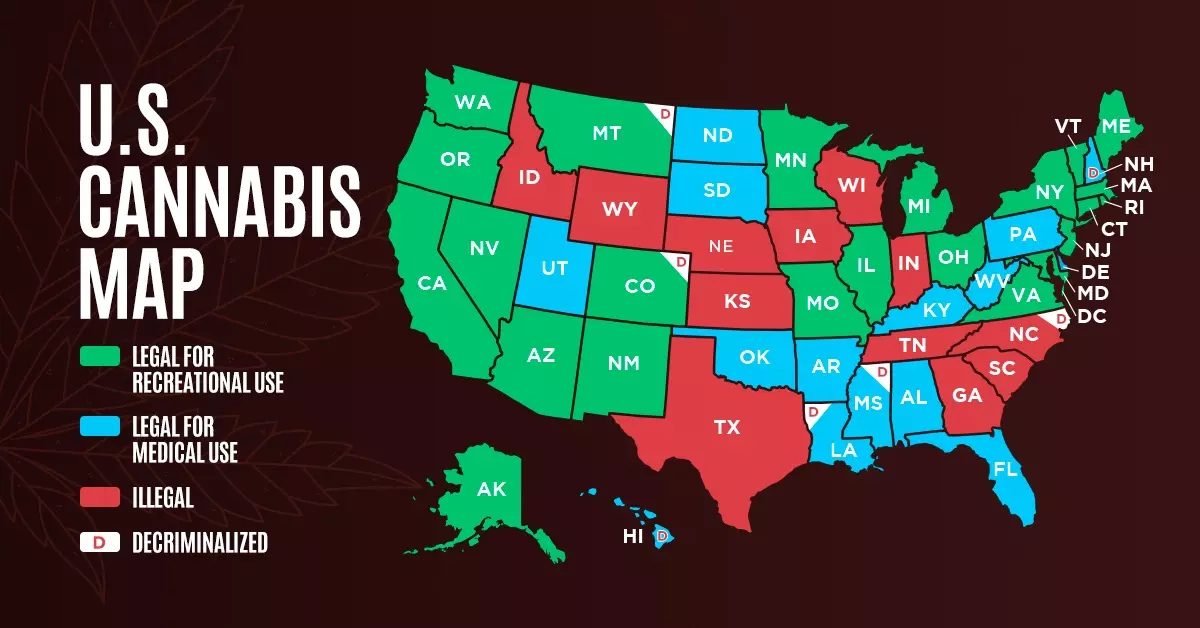Cannabis is a topic that’s been sparking debate for ages, and for good reason. For a long time, weed was seen as this shady character lurking in back alleys, thanks to its classification as a Schedule I drug by the US Drug Enforcement Administration in 1970.
It would always be lumped in with drugs like heroin and LSD due to its supposed “high potential for abuse” and lack of accepted medical use.
This categorization disregarded a growing body of evidence that indicated that cannabis offered probable health benefits…
The Green Rush
California created a revolution in 1996 when it became the first state to legalize medical marijuana. Since then, many other states have followed suit. Today, 39 have medical marijuana programs that permit innumerable patients who suffer from various ailments to get access to cannabis legally and safely.
These programs have marked a turning point. Firsthand exposure to cannabis is allowing people to see the potential of the plant to alleviate symptoms and improve the quality of life. The experience is chipping away at the stigma surrounding cannabis, fostering a more balanced understanding of the plant.
Medical Marijuana
The most common medical benefits of cannabis come from Cannabidiol, or CBD, and delta-9-tetrahydrocannabinol (THC). Doctors, where it is legally allowed, prescribe dried cannabis, oils, tablets, and other products containing CBD and THC to treat a variety of conditions, including chronic pain and anxiety.
- Gone is the outdated “reefer madness” perception, as it is quickly being replaced by a new paradigm brought about by the resounding success of medical marijuana programs. Nowadays, people are seeing for themselves how it can help manage health issues, and that chips away at the old stigma.
- Science on the Side of Cannabis
The growing acceptance of medical marijuana is bolstered by a growing body of scientific research. For instance a paper by the National Library of Medicine website, showed a decrease in opioid prescribing rates in states with medical cannabis laws.
This suggests that cannabis may be a valuable tool in combating opioid addiction, a major public health crisis in the United States.
Another study by the National Institutes of Health’s National Library of Medicine, investigated the use of cannabinoids, the active compounds in cannabis, in pain management. The researchers concluded that there is “moderate-quality evidence” that cannabinoids can improve chronic pain symptoms.
Out of Date Policies
The current Schedule I status of cannabis is increasingly seen as outdated and even irrational.
This is as a result of the increased success of different medical marijuana programs, as well as the growing medical evidence that proves the plant’s therapeutic utility; in ways which have gained steam toward eventual federal legalization of recreational cannabis.

As more states adopt cannabis legalization, and as public opinion continues to shift, federal lawmakers will be under even greater pressure to revisit the current system of cannabis classification.
Resistance to Weed
Of course, not everyone is on board with marijuana; some are concerned about the possibility of abuse … with that being a valid concern. Considering many prescription drugs that have a far greater addictive potential are classified as Schedule II or III, the current classification system leaves a lot to be desired.
This inconsistency highlights the need for a drug policy based on scientific evidence, not outdated perceptions.
Brighter Future for Cannabis
- Great success with medical marijuana programs have fostered a great deal of future optimism. More research is emerging highlighting potential therapeutic benefits to cannabis. Studies show promising results about pain management and even use in fighting opioid addiction.
Increasing public support coupled with better science places us on the threshold of real change. Will cannabis ever be descheduled and go mainstream? Only time will tell, but the future certainly is looking brighter for cannabis.
